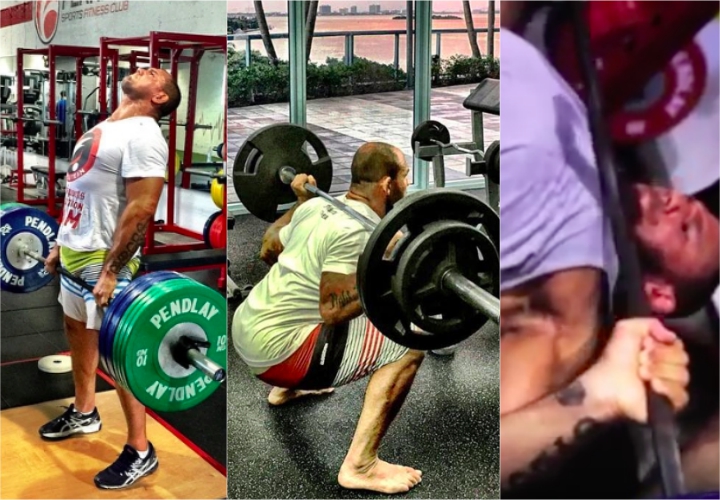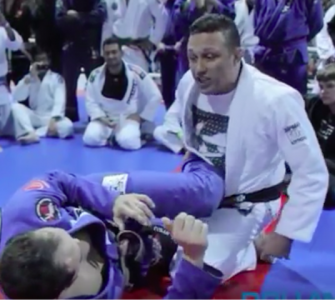Guest post by Will Safford, a Certified Strength and Conditioning Coach who trains under Andre Galvao in San Diego, CA. He received is purple belt in December of 2013 and competes occasionally in the heavyweight division. Will specializes in mobility training, injury prevention, and kettlebell strength and conditioning. Visit his website at www.ironwillathletics.com and check out his new e-book about Strength Training for BJJ:Strength Without Size.
The big three lifts, the Deadlift, Squat, and Bench Press, should be the foundation of any strength routine. They build tremendous strength, work multiple muscles and joints, and their results transfer directly to athletic performance, including Jiu Jitsu. If you’re new to the lifts, these tips are a good way to get more out of your time with the barbell. If you’re a Big Three veteran, it never hurts to refresh yourself with these subtle cues you may have forgot. Remember, learn the move before you load the move. Have a pro check your form, then get busy under the bar.
Deadlift
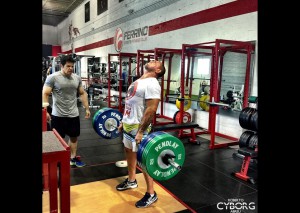
Arguably one of the best exercises for grappling, the Deadlift is the kingpin of the barbell lifts, and develops your entire posterior chain from your traps to your hamstrings and calves. This move can make you incredibly strong and stable, but if done with too much weight, poor form, or for too many reps, is easy to injure yourself with.
– Go heavy, but build slowly. To get the most from the DL you want to lift heavy. Working with sets between 80-95% of your one rep max will get you the strongest the quickest. But, if you haven’t put in the time to develop the adequate movement pattern, neurological connections, and resiliency in your connective tissue, inefficient performance will prevail, and injury is likely. Keep your reps in the 50-75% range for a few months before testing yourself with near maximal loads.
-Keep the reps low. Most people start to lose their form above sets of five in the Deadlift. So, to reduce your risk of injury, keep your sets at five and below. Fittingly, the Deadlift is a strength move, and reps of five and below will develop the quality of strength the best. As you approach higher loads of 85, 90, and 95%, drop your reps to 3,2, and 1 per set, respectively.
-Push the floor away. In the case of the DL, we often think of pulling the weight off the floor. Sometimes, however, if you reframe the movement to pushing the floor away from you instead, it may be just what you need to activate more muscle for a bigger lift. Another visual is to think of wedging yourself between the floor and the bar. Reframing like this can cause you to get tighter and fire more muscle units to move more weight.
– Try the Sumo Deadlift. Most of us learn to deadlift the conventional way. If you suffer from lower back problems and/or are tall, you may be better suited for the Sumo Deadlift. Adopting the wider, more upright position of the Sumo DL takes some emphasis and stress off of the lower back and puts it more on the quads and hips. You will still reap the benefits of pulling a heavy load from the floor, but with less demand on your lower back.
-Hang on a pull-up bar between sets. The spine becomes compressed when pulling heavy loads from the ground. Undo some of that compression by hanging from a pull-up bar between and after your sets. This will allow the muscles of the lower back to stretch a bit, and keep your spine healthy and at less risk of injury.
– Don’t wear shoes. Whenever possible, ditch your shoes when Deadlifting. The heel from modern training shoes puts you at a mechanical disadvantage when Deadlifting, and decreases the neurological input to your feet and body. You want as much connection to the ground as possible to maximize your neuromuscular output. Besides, do you train Jiu Jitsu with shoes on?
Squat
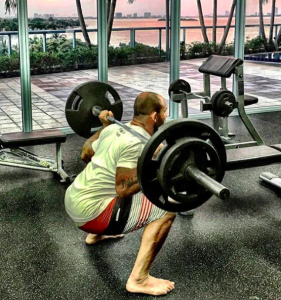
The squat is a fundamental human movement that, when done with appropriate load and volume, can create serious strength and muscle for an extremely powerful lower body.
– Create torque. Torque is a twisting force that, when applied to the squat, helps to optimize the transfer of strength and power, places the demand on the correct musculature, creates stability, and allows the femur to properly rotate in the socket for maximum depth and range of motion. If you’re not creating torque throughout each and every rep, you’re robbing yourself of these valuable benefits. To apply torque, screw your feet into the ground with external rotation. In other words, put downward pressure into the ground and try to spread the floor with your feet. Maintain this torque throughout each rep in every set.
– Squeeze your shoulder blades together. When performing the Back Squat, squeeze your shoulder blades together as tight as possible to create a shelf for the bar to rest on. This will encourage an upright torso, especially when you’re fatigued and starting to tip forward in your lift. Try to bring your hands in as close as possible to your shoulders on the bar, drive your elbows down under the bar, and maintain straight wrists throughout.
– Tighten your core like you’re doing a plank. If you’re squeezing your core as hard as possible, which will protect your spine and make your lift stronger, you should be sore in your core the day after squatting. This isometric contraction of your core will make you more stable and powerful on the mat, and is magnified during Front Squats and Zercher Squats. Regardless of what type of squat you’re performing, however, a tight core is a must for any Squat variation.
– Don’t wear shoes. As mentioned for the DL, you rob yourself of valuable neurological input via your feet when your wear footwear to lift. An elevated heel, however, can help gain maximum depth while maintaining an upright torso during the Squat. This is due to increased ankle mobility. Instead of relying on shoes, work on improving your ankle mobility through foam rolling and mobility drills instead.
Bench Press
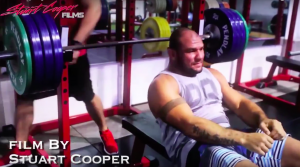
The Bench Press is the king of the upper body lifts, and as the guard is performed from the back, the Bench Press transfers well to BJJ. Frequently, we are pushing opponents away and framing to maintain space and distance.
-Break the bar and create torque. Just as torque can be applied to the Squat, it can also be used to improve your Bench Press. To properly align your shoulders, decrease the chance of injury, optimize the transfer of force, and keep the tension on the appropriate muscles, try to break the bar when you bench. In other words, externally rotate your arms while you grip the bar so that the pit of your elbow turns outward toward your face. Maintain this torque throughout the entire lift.
– Ground your hips. You can create leverage and stability by grounding your hips before you bench, which will improve the transfer of strength and force. Before you start your set, lie on the bench with your head further up the bench then where you would normally press from. Set your feet firmly into the ground, driving through your heels. Then, without moving your feet, slide your body down so that you’re in your regular benching position, eyes underneath the bar. Do not move your feet throughout the entire set and feel how solid and stable your hips remain through the set. You should be instantly able to press more.
– Drive through your heels. This goes hand-in-hand with the previous tip. Driving through your heels allows you to use leverage to your advantage and activate other muscles to contribute to your press. Squeezing your glutes, quads, and core, all while driving hard into the ground through your heels with allow for a bigger bench.
– Keep your shoulder blades together. Before your first rep, pull your shoulder blades fully together underneath you. This will create a stable platform for your shoulders, put the tension on your pecs, and reduce your risk of shoulder injury. Be sure to keep your shoulder blades pulled back and together throughout the entire set.
– Maintain straight wrists. Although straight wrists on the Bench Press may feel unnatural at first, they will promote better transfer of force and less strain on the small joint of your wrists. Just as you would throw a punch with a straight wrist, pressing this way will maximize your performance while minimizing your risk of injury.

